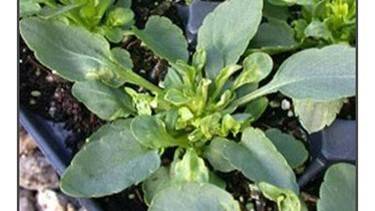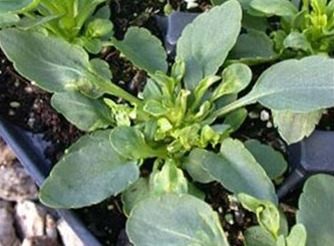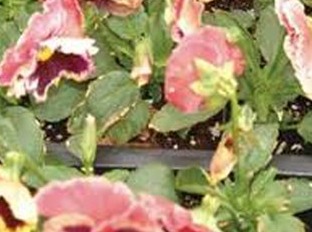Role of Boron in Plant Culture


Boron (B) is not required by plants in high amounts but can cause serious growth problems if it is not supplied at appropriate levels. Boron is different from other micronutrients in that there is no chlorosis associated with its deficiency; however, it does have similar toxicity symptoms as other micronutrients.
Boron is used with calcium in cell wall synthesis and is essential for cell division (creating new plant cells). Boron requirements are much higher for reproductive growth so it helps with pollination, and fruit and seed development. Other functions include translocation of sugars and carbohydrates, nitrogen metabolism, formation of certain proteins, regulation of hormone levels and transportation of potassium to stomata (which helps regulate internal water balance). Since boron helps transport sugars, its deficiency causes a reduction of exudates and sugars from plant roots, which can reduce the attraction and colonization of mycorrhizal fungi.
Deficiency
Boron deficiency is expressed in the growing points of roots and shoots and also flower and fruiting structures. Often, terminal buds die and shoot internodes shorten, which leads to stubby, distorted new growth emerging from side nodes causing “rosetting” or a “bushy” appearance. Stems are brittle and new leaves may be thickened. Roots are often short and stubby; very few root hairs are present. Flowering and fruiting are reduced and what develops is often distorted.
Boron deficiency can occur when the pH of the growing medium exceeds 6.5 because boron is tied up and unavailable for plant uptake. Deficiency can also occur from low fertilizer application rates, use of general-purpose fertilizers (which typically have a reduced micronutrient content), and cool, cloudy weather that limits the uptake of water and boron.
During cool, cloudy weather, encourage a rapid dry-down of the growing medium by increasing airflow, reducing humidity and increasing the temperatures of the growing medium. The use of PRO-MIX® HP can help with drainage and, due to its higher air capacity, may reduce the effects of overwatering. Impatiens, pansies, petunias and salvia are sensitive to boron deficiency, especially during the plug stage or in containers with small growing medium volumes.

Toxicity
Boron toxicity is similar to other micronutrient toxicities in which the older leaves start to show a marginal or leaf tip chlorosis that soon becomes necrotic or burned. Necrosis progresses inward on the leaf causing its death and defoliation. It can rapidly affect all lower leaves. The range between the correct application rate and the toxic application rate is very narrow. If boron toxicity occurs, test the growing medium's pH and nutrient levels, and also test the water.
Boron toxicity can occur if the growing medium's pH is below 5.5 or if there is an overapplication of boron. Check the water source as levels above 0.5 ppm are considered high, especially when combined with standard fertilizers that contain boron. Leaching will help flush out excess boron, and apply a calcium-containing fertilizer as calcium is known to bind up boron and make it unavailable.

Where to Find Boron
Boron deficiency and toxicity can occur but are not common since most fertilizers provide what is required for most crops. Test the irrigation water as it may contain sufficient levels of boron (0.3-0.5 ppm); if so, use boron-free fertilizers as it is easy for boron toxicity to occur. If boron deficiency occurs and it is not due to the pH or fertilizer application rate, a complete micronutrient fertilizer can be applied (which is preferred) or a boron supplement such as borax, boric acid, etc. Use extreme caution when applying a boron supplement as application rates are very low and it can be easy to overapply.
Contact your Premier Tech Horticulture Grower Services representative for assistance in establishing the fertilization program that will work best for your crops and that will help avoid boron problems.